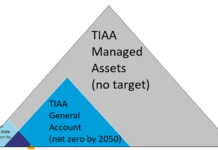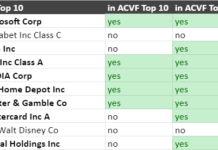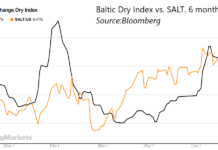by Tom Konrad
Lifestyle Risks from Peak Oil
In the US, we all have a large exposure to the risk of rising energy prices. In addition to the cost of gasoline, the whole US economy runs on oil, so a rise in the oil price is likely to affect our jobs, and the prices of all our assets, including our homes. If other people have less money to spend and invest because of high oil prices, there will be a fall in demand for anything they were buying or investing in.
House prices in exurbs and suburbs where the car is the only available transport option are likely to be most affected because living there entails relatively high car use. If you live far from where you work, your expenses will not only go up with the price of oil, but the value of your home is likely to fall, leaving you doubly exposed. In contrast, real estate which is centrally located or which is well-served by mass transit may show positive correlation with the price of gas, and hence serve as a against the gas price.
This oil price exposure can be (imperfectly) hedged with investments in clean energy or oil price futures, but a more effective way to reduce your risk is to live close to your work. If you already live far away from most jobs and own your home, you can reduce your personal expenses by finding ways to telecommute or use mass transit, but the value of your home is still linked to the oil price. Since this is a long term trend, you may be able to protect the value of your home by advocating for better public transit in your area, but given the time and effort this entails, a large allocation of your portfolio to clean energy stocks or oil futures is probably the best you can do. In addition to my own blog, Jim Kingsdale’s Energy Investment Strategies is an excellent place to learn about investments available to the retail investor.
However, you should not underestimate the magnitude of oil’s direct impact on your expenses. If you drive 30 miles round trip, five days a week, that’s about 300 gallons a year, even in a 30 MPG vehicle. Each $1 increase in the price of gas requires $300 of extra income a year to hedge your exposure.
Driving an alternative fuel vehicle is not a hedge for oil price risk, since the prices of alternative fuels are highly correlated with the prices of petroleum based fuels, although a more efficient vehicle is a partial hedge.
Investments as a Peak Oil Hedge
For investments to hedge that expense, you will need investments that increase $6,000 to $8,000 for each $1 increase in the price of gasoline to produce $300 of extra income annually. Assuming you have found a portfolio which increases 10% for every $1 increase in the price of gas, you will need approximately $70,000 invested to hedge your commuting costs, and possibly as much again to hedge the price of your home.
Even with $70,000 to invest, most stocks or portfolios of stocks are an imperfect hedge against the price of gas. The best hedge in terms of correlation with gas prices are oil or gasoline futures, but trading futures is considerably less accessible than trading stocks, and does not produce income. Trading oil futures is a zero-sum game: for everyone who makes money, a counterparty loses money. In stockmarket investing, the internal profits of companies can provide a basis for a positive net return for all investors. That extra benefit and the opportunity to invest with my beliefs, make me willing to accept the much weaker correlation clean energy stocks have with energy prices.
Better Than a Hedge, Reduce Your Risk
If you don’t have $70,000 in your portfolio to neutralize your gas-price risk, or are uncertain of your portfolio’s correlation to the gas price (most stocks will actually fall as the price of gas goes up,) it makes sense to find less gas-intensive options to your normal commute. Then, if fuel rises to a painful level, it will be easier for you to switch quickly to less fuel-intensive options.
Even though I live near my work, I’ve been doing just that, ever since I became convinced that better cars are not an effective solution (or investment response) to peak oil.
An EV You Can Carry in One Hand
A couple weeks ago I mentioned that I was cutting my driving with a Motorboard. The motorboard is an electric scooter which is so compact that you can fold it up in a few seconds and carry it in one hand (it weighs about 16 lbs.) I think of it as a much cheaper and cooler Segway which I can carry. Since it has a low range, it is best seen as a supplement to mass transit, not a stand-alone transit option. The combination of motorboard plus transit allows distance travel without the limitation of start and end points within walking distance of transit stops.
I wrote a review of the Motorboard for Carectomy.com, which you can read here.
DISCLAIMER: The information and trades provided here are for informational purposes only and are not a solicitation to buy or sell any of these securities. Investing involves substantial risk and you should evaluate your own risk levels before you make any investment. Past results are not an indication of future performance. Please take the time to read the full disclaimer here.








